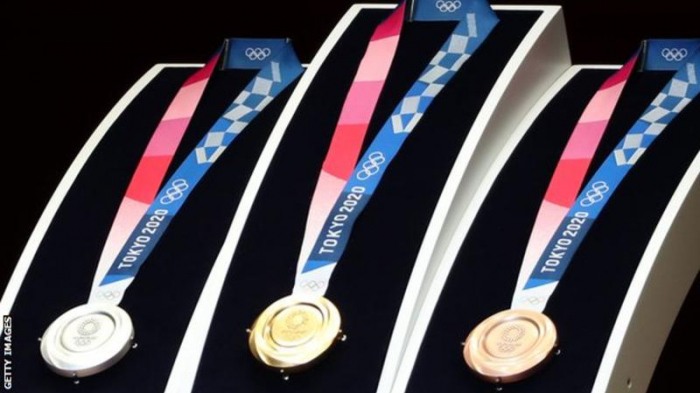The medals, which are designed to resemble polished stones, are the first sustainable medals in Olympic history according to organisers.
About 32kg of gold were extracted from 6.2 million used mobile phones donated over two years by the Japanese public.
They also recovered 3.5 tonnes of silver and 2.2 tonnes of bronze to make 5,000 Olympic and Paralympic medals.
The medals at Rio 2016 included an element of recycled material, but at a lower level to those produced for 2020.
The front of the Olympic medal shows the traditional design featuring the goddess of victory, but since Munich 1972 the host nation have designed the reverse of the medal.
The design is "intended to symbolise diversity and represent a world where people who compete in sports and work hard are honoured" according to organisers.
Four different robots will also be in operation at venues, including versions of mascots Miraitowa and Someity who will be able to wave, shake hand and greet visitors.
Other models will move around venues capturing video and audio to transmit to people unable to attend the Games or collect hammers, javelins, discuses and shot puts used in athletics' throwing events.














-1741278702.jpg&h=190&w=280&zc=1&q=100)

































